The Archives of the Suriyakantha Center Contribute to the Restoration Campaign of the Temple of the Tooth in Kandy
2022 December 01
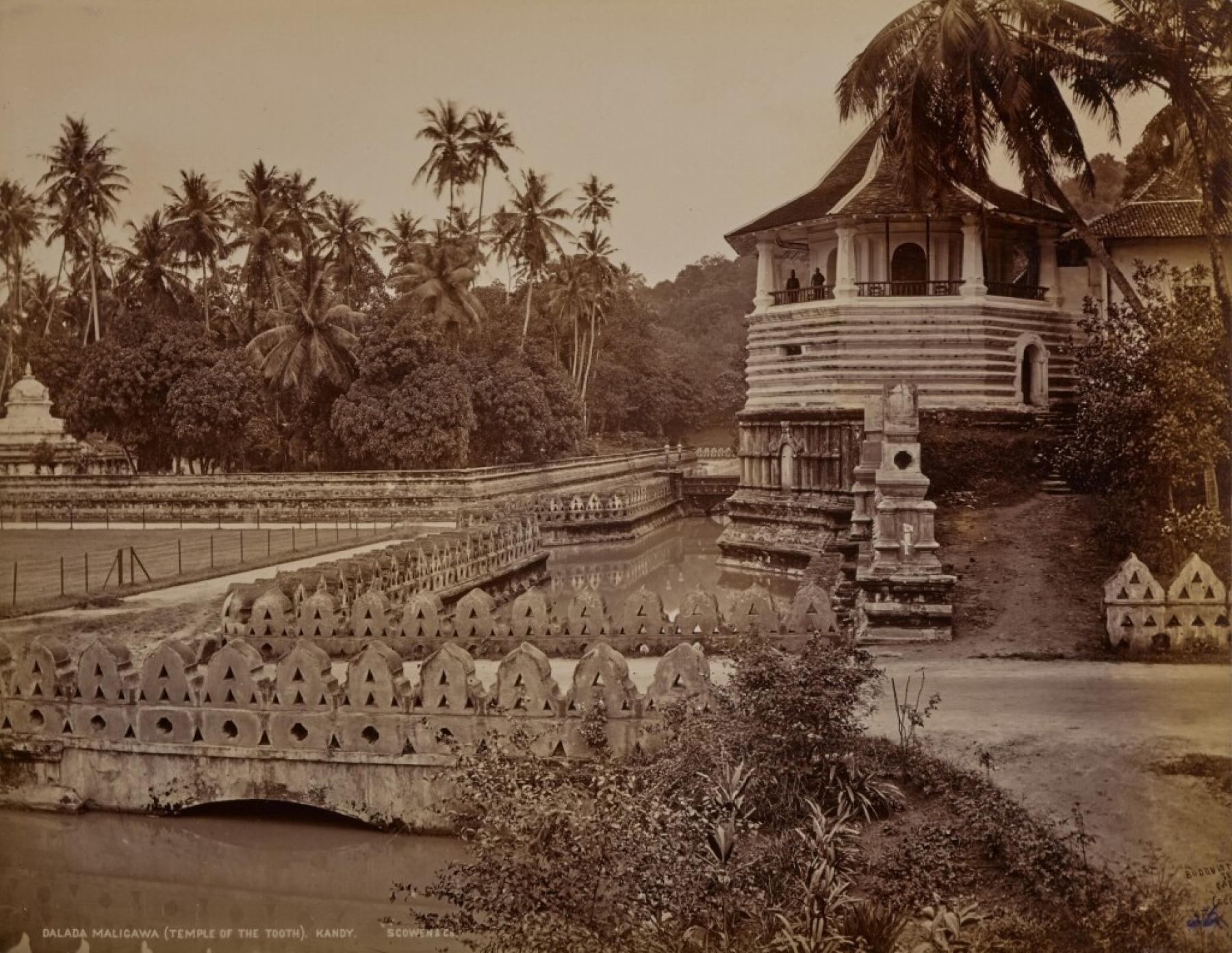
By Janaka Samarakoon - - Nice, 01/12/2022
In early 1998, the Temple of the Tooth, a significant Buddhist cultural site in Sri Lanka, was the target of a terrorist attack. Listed as a UNESCO World Heritage site, the location fell victim to a devastating bomb attack orchestrated by the Tigers, an organization advocating for the creation of an independent Tamil state in the North and East of Sri Lanka between 1983 and 2009.
On January 25, 1998, three "Black Tigers," formidable suicide attackers specially trained for deadly attacks, drove a truck filled with explosives into the entrance of the Temple of the Tooth. The assault resulted in at least 25 deaths, numerous injuries, and disfigured the religious structure. The delicate murals, wooden and stone sculptures, and other architectural elements dating back to the Kandyan era suffered irreparable damage. A restoration project spanning several years followed, involving hundreds of individuals, including architects, engineers, artists, and craftsmen.
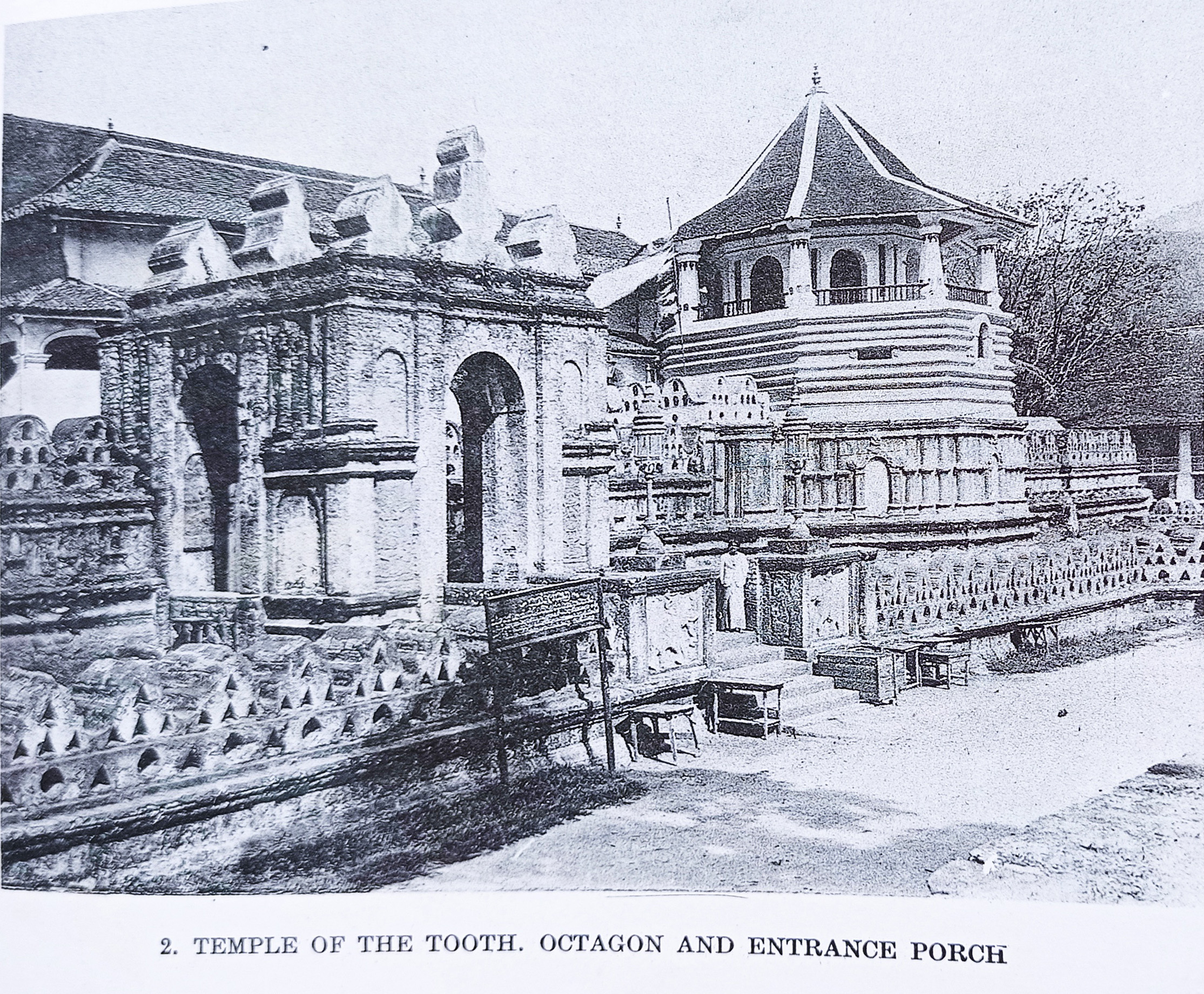
[Photo] The entrance of the Temple of the Tooth, as depicted in a publication by English archaeologist Arthur Maurice Hocart (1883-1939) in the early 1930s. The staircase, consisting of five steps, not including the smaller one belonging to the "moonstone," remained in this configuration until the terrorist attack in 1998. Image courtesy: Suriyakantha Centre for Art & Culture
Despite its granite structure, the main entrance, where the truck crashed, suffered significant damage. The entrance comprised a « Moonstone"—an emblematic architectural element symbolizing the cycle of samsara and marking the entrance to a sacred enclosure—five steps, two bas-relief elephants, and a monumental entrance consisting of three arches, reminiscent of Greco-Roman triumphal arches. This was the famous "Mahawahalkada."
Vidya Jyothi Gemunu Silva (1943-2021), a Sri Lankan engineer, accompanied by Professor Chandra Wickrama Gamage, a renowned local historian, led the teams responsible for restoring this part of the structure. Niranjan Wijerathne, the secular guardian of the Temple, naturally served on the oversight committee for this extensive project. He was personally acquainted with Jacques Soulié and Rohan de Silva, whose collection of art objects, artifacts, various archives, and books, most of which were collected in Europe, would, 15 years later, give rise to the Suriyakantha Center, as we know it today.
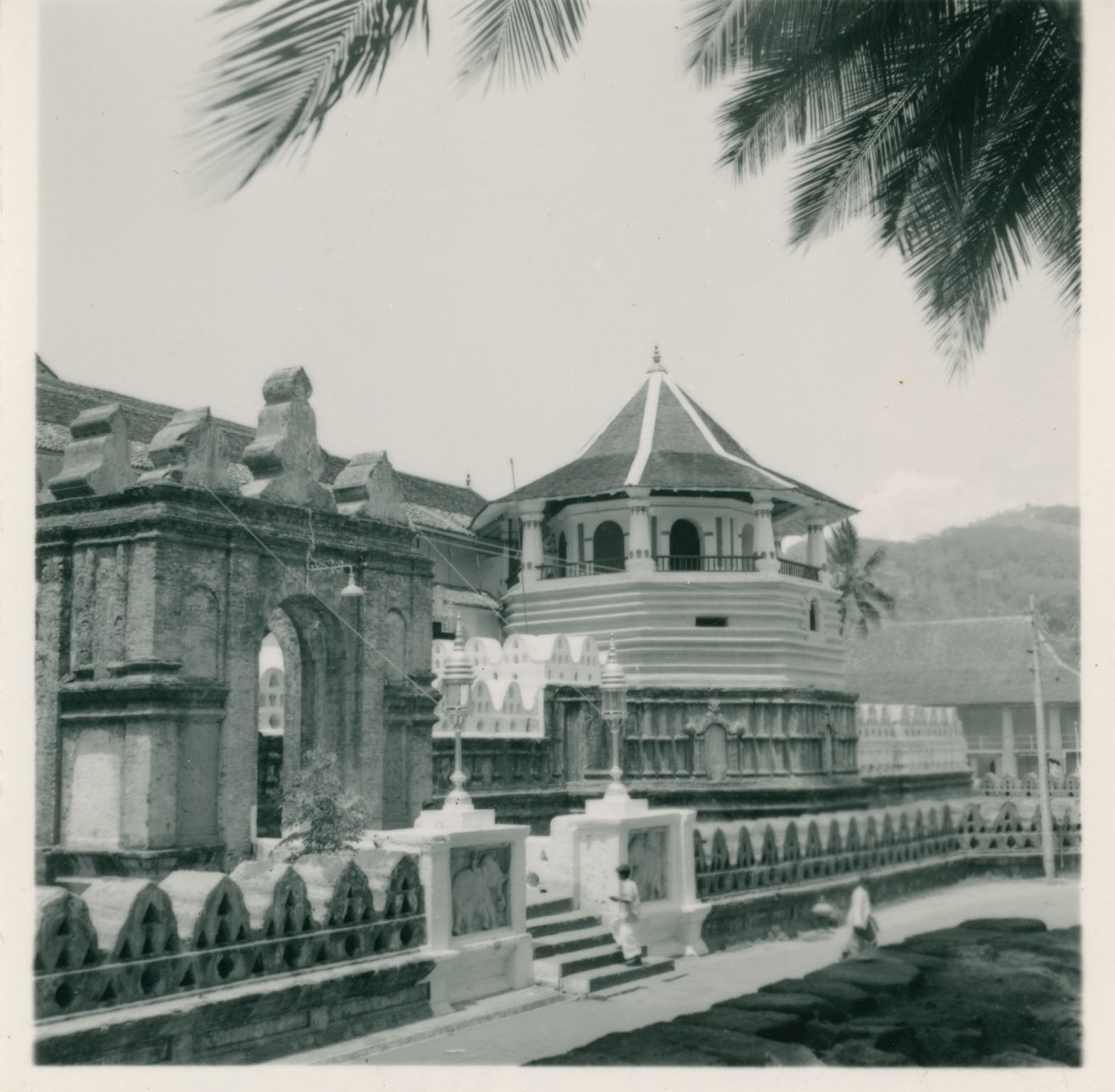
Photo of the entrance of the Temple of the Tooth by John Rhoden (John W. Rhoden, 1918-2001), taken in 1953. No significant topographical difference compared to the photo from the 1930s above.
During an informal meeting, Jacques Soulié and Rohan de Silva were informed of the difficulties encountered by the restoration teams in refurbishing the main entrance of the Temple. Reference was made to a photographic album in their collection containing a series of albumen prints depicting the Temple of the Tooth. These photographs were taken in the 1880s-1890s by two Englishmen, William Louis Henry Skeen (1847-1903) and Charles Thomas Scowen (1852-1948), using a photographic process developed by Louis Désiré Blanquart-Evrard that was popular in the second half of the 19th century.
Immediately, a team of technicians led by Gemunu Silva arrived at Dr. Soulié's residence, located about ten kilometers from the restoration site, to gather elements that could shed light on the work of the restorers. A dramatic turn of events followed. It was discovered that originally—or at least in its late 19th-century state, that is, before the urban development undertaken during the 20th century with varying degrees of scientific and artistic scruples—the entrance consisted not of five but six steps! Had the road embellishment works engulfed one of them?
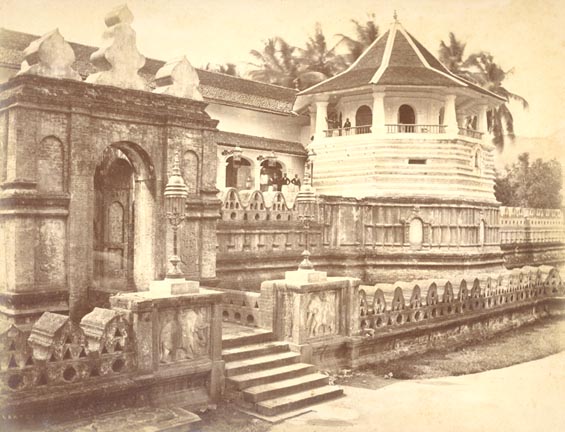
The Entrance of the Temple of the Tooth, Kandy (Ceylon), circa 1880-90, albumen silver print, Scowen & Co. The "moonstone" and the small step that were integral parts are not visible in this image, taken by the English photographer. Could they be buried under the sand to the point of disappearance? However, excluding this decorative element, the staircase consists of six steps of more or less equal size. One of them will disappear in the years to come, as can be seen in subsequent photos. When and how? Image courtesy: Suriyakantha Centre for Art & Culture.
The new restoration campaign in 1998 rectified this late architectural anomaly. The reconstructed main entrance now features its original six steps. Furthermore, the reconstructed bas-reliefs draw inspiration primarily from these very prints, carefully preserved at Suriyakantha.
Thus, through a fortunate serendipity, a few prints from an obsolete technology, taken in Kandy 100 years ago by two British citizens and acquired in the 1980s by a Frenchman, return to Kandy to contribute to the restoration campaign that would restore the sacred site to its former glory.
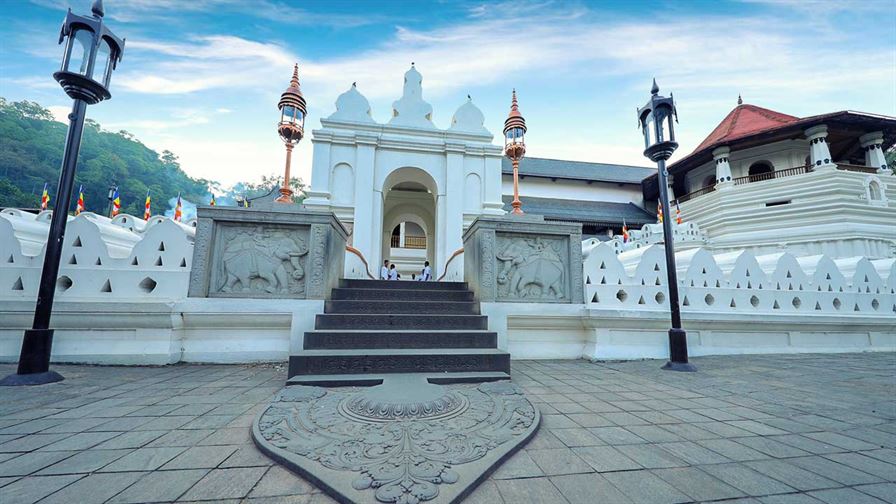
The current entrance, reconstructed after the terrorist attack, indeed has its "original" six steps, as seen in Scowen's document, preceded by the "moonstone." © Sri Dalada Maligawa
This article is inspired by an interview given by Gemunu Silva to the Sri Lankan newspaper "Mawubima" on July 6, 2014, and the recent testimony of Dr. Jacques Soulié, Director of the Suriyakantha Centre for Art & Culture.
A Whisper in The Soul - A Picture Chronicle by Janaka Samarakoon
2024 January 29
Contextualising Kandyan Period Frescoes
2023 August 10



